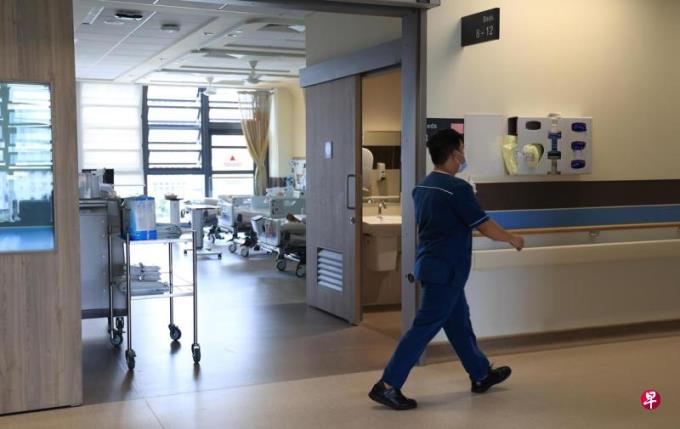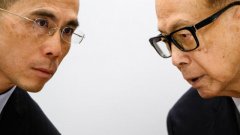
As the cost of medical care continues to rise, the lifelong health insurance plan will be adjusted from April next year to help Singapore residents pay a large amount of medical expenses.In addition, it will expand the scope of underwriting, cover new outpatient and home medical services, and improve the limits of outpatient claims for long -term diseases such as dialysis.On the other hand, in order to ensure that everyone can obtain the treatment of high -tech medical technology, it incorporates expensive new therapies such as cells, tissue and genetic treatment into the scope of claims.
Lifetime health insurance is a national medical insurance plan. The increase in claims and expansion is expanding, which means that premiums will increase.The Ministry of Health pointed out that the premium of lifelong health insurance will gradually increase within three years, an increase of 9%to 35%, an average increase of 22%, and premiums are expected to increase by 1.8 billion yuan.However, the government will provide additional assistance of 4.1 billion yuan, of which 3.4 billion yuan will fill health savings, and the other 700 million yuan will be premiums.
This is the second major adjustment since the implementation of the lifelong health insurance plan in 2015.In 2020, the Lifetime Health Insurance Committee appointed by the Ministry of Health proposes to increase the limit of claims to ensure that 90 % of government hospital allowances for medical expenses.At the same time, premiums increased by 11%to 35%, an average increase of 25%.The government also provided high premium allowance at the time.
But the limit of claims has increased the increase in medical expenses.At present, only eight of the medical expenses bills of government hospital allowances have received a lifetime health insurance payment.The Lifetime Health Insurance Commission issued by the Ministry of Health on Tuesday (October 15), it is recommended to raise the limit and premium of the claim again.Among the increased premiums, 70 % are expenses used to pay for the increase in medical costs and increase the number of claims.The Ministry of Health has accepted all suggestions for the committee.
Singapore's medical payment framework includes four parts, one is government allowance; the other is the health savings plan; the third is the lifelong health insurance plan; the fourth is the health fund plan.These four pillars are designed to ensure that pharmaceutical services are affordable and can be available.
Minister of Health Wang Yikang pointed out that some countries implemented free medical services for all people and paid them by taxpayers, but this leads to excessive medical needs and extend the waiting time for hospitals and pharmacies.This system solves the problem of affordable, but has caused medical services.On the other hand, some countries implement the medical insurance system to alleviate the problems of excessive demand, but those who are not able to buy insurance and cannot pay medical services.He emphasized that medical services must be balanced in both burdens and available aspects.
Singapore adopts a medical payment system that is mixed with insurance and insurance, and the government and the Chinese people shall jointly undertake medical expenses.A large amount of allowances invested by the government in medical services are to ensure that all residents obtain high -quality medical services, and no one loses medical care for economic constraints.On the other hand, health savings and lifelong health insurance programs are to ensure that medical services will not be abused.When raising premiums, the government, as always, provides allowances during the transition period to relieve the pressure of increased premiums.
Even so, the Lifetime Health Insurance Commission pointed out in the report that the rise in medical expenses and the ability to pay is still the hidden concerns of many people.When the report was planned, it held eight group meetings and two round table meetings to talk to more than 300 stakeholders.It found that many people have different purpose and content of the lifelong health insurance plan. They cannot distinguish between different insurance plans such as private comprehensive health insurance plans or lifelong protection planning plans, and they are worried that rising premiums will empty their health savings.In the middle -income group in the sandwich layer, they generally feel that they have the least aid and the most affordable.
The committee believes that it is necessary to make the public more clearly understand the operation of the medical payment system through communication, thereby being enthusiastic about medical services.It pointed out that some participants had misunderstandings about the concept of the risk sharing of national medical insurance, which led them to think that this plan was an older insured with a strong young man with a higher probability of subsidy claims.As everyone knows, the risk sharing of this plan is divided according to different age group combinations to avoid cross subsidies between generations.
TheLifetime Health Insurance Program has been implemented for nearly 10 years.With the pushing of years, the medical payment system is becoming more and more complicated, and the plan and name of Lin Lin have confused many people and exacerbate their concerns about medical expenses and payment capabilities.Medical services involve everyone's well -being and wallet. The officials should continue to increase their efforts in public education and try to simplify the content of the plan.
The increase in claims for the lifelong health insurance plan reflects the fact that medical costs continue to rise.After the crown disease epidemic, Singapore's medical food and residential expenses rose to rise and conduct each other.Coupled with the aging of population and the use of high -end technology, it means that medical expenses and premiums will continue to face upward pressure.




